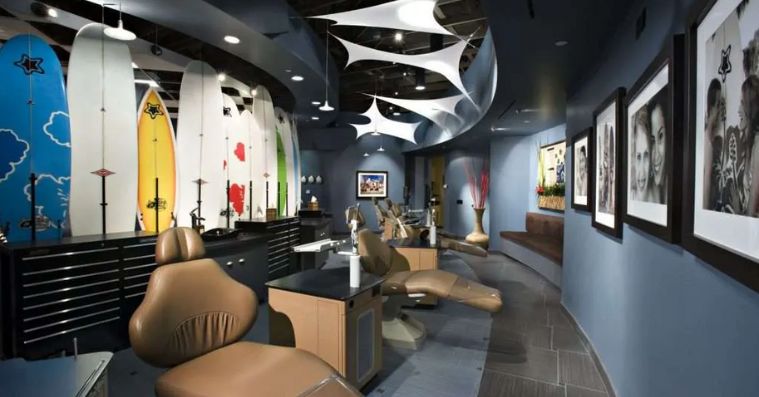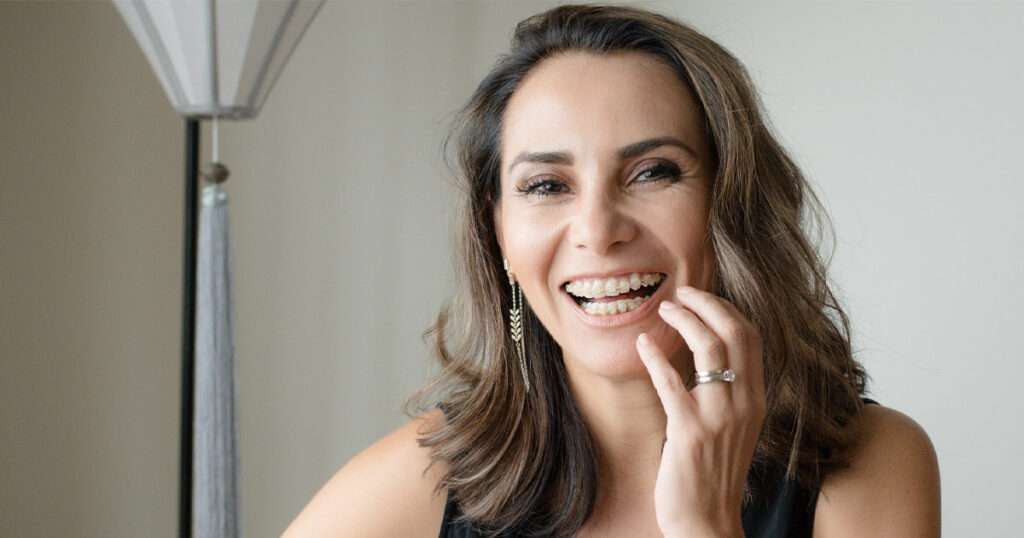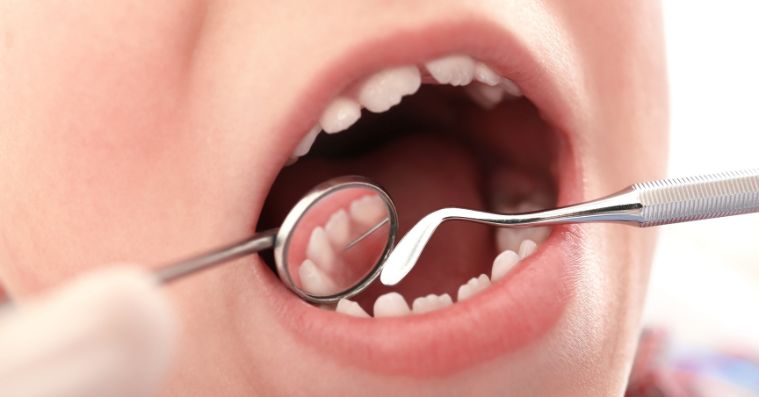Plenty of people have crooked teeth and seek orthodontic care to fix them. Of course, while having crooked teeth is common, it can negatively affect your confidence in your appearance and your smile. In severe cases, crooked teeth can even lead to serious dental health issues. Whether you’re having dental health issues or are simply displeased with the look of your smile, you may want to speak with an orthodontist about how to fix crooked teeth in adults.
What Causes Crooked Teeth In Adults?
Why do so many people have crooked teeth? There are a variety of reasons, from genetics to bad habits and more. Misaligned teeth result from a mix of both genetic factors and environmental factors, including injuries and habits. In fact, both permanent teeth and baby teeth can emerge and grow in crooked, or become crooked later. Keep in mind, just because a toddler has crooked teeth, that doesn’t mean their adult teeth will also be crooked. However, straight baby teeth also don’t guarantee straight permanent teeth. In all cases, the mix of genetic and environmental factors is unpredictable and can result in crooked teeth at any stage.
In babies and kids, teeth often grow crooked because of a lack of gum space or simply as a result of genetics. Later, they may become misaligned from sucking on a thumb or pacifier. When baby teeth begin falling out and adult teeth start growing in, the new permanent teeth could emerge sideways for various reasons, including limited space, oral trauma, gaps left by missing teeth, and more. As you can see, for both adults and children, the main factors that contribute to misaligned teeth are both environmental and hereditary.
Genetics and Evolution
Genetics play a large role in crooked teeth. If one of or both your parents had crooked teeth or suffered from an overbite or under bite, it’s more likely that you will deal with similar dental issues.
The process of evolution throughout the last few million years has slowly changed the human mouth and jaw, and both have become smaller and smaller to adapt to the softer, processed, modern diet. Teeth, however, haven’t fully adapted to this change in jaw size. This is most readily apparent with the wisdom teeth. Most adult jaws aren’t able to support a set of 32 teeth, and the lack of space in the jaw and gums causes teeth to grow misaligned and out of place. This is why wisdom teeth are usually pulled before later adulthood, and also a primary reason orthodontic treatment is often necessary.
Unfortunately, whether you have a need of orthodontic services is often a genetic lottery.
There are some specific genetic issues that can lead to badly aligned teeth, including:
- Small Jaw Size – Having a smaller jaw will result in less space for your teeth to properly align. Teeth may grow crooked and become crowded.
- Large Size of Teeth / Odd Number of Teeth – Bigger teeth can also lead to crowding and misaligned teeth, as can developing too many teeth. Alternatively, some people don’t develop a full set of 32 teeth. The gaps created by lack of teeth can lead to other teeth moving in the jaw, causing misalignment.
- Misaligned Jaw, or Malocclusion – The human jaw is meant to rest with the upper row of teeth fitting slightly over the lower row, with the molars fitting together. Malocclusion occurs when this alignment is set improperly. Overbite and under bite are common results of this misalignment. Malocclusion could be the result of genetics or the result of bad habits in chewing, swallowing, or other mouth muscle movements.
Bad Dental Habits
Though genetics and uncontrollable factors play a part in crooked and misaligned teeth, bad habits can also play a big role. For example, many babies and young children have a thumb-sucking habit, but allowing this to go on too long can result in the teeth sitting at incorrect angles.
These are small habits that seem harmless, but can cause serious issues with the health of your teeth.
- Thumb Sucking – While self-soothing is natural and helpful for toddlers and babies, thumb sucking can begin to shift and change the angles of your child’s teeth. Eventually, this can create an open bite. Prolonged thumb sucking (as well as prolonged pacifier use) can lead to crooked teeth well into adulthood.
- Tongue Thrusting – The habit of pressing or thrusting your tongue against your teeth when you swallow can change your teeth alignment. It’s especially damaging for developing teeth, as the strength of the muscles and repetitiveness of the motion can make emerging teeth crooked.
- Poor Dental Upkeep – Taking poor care of your dental health and failing to schedule regular dentist appointments can lead to untreated dental issues like cavities or gum disease. If these problems are not addressed, they can lead to crooked teeth.
- Poor Nutrition – Poor nutrition can create tooth decay and lead to poor development of teeth. Poor nutrition particularly affects children and can create misaligned teeth in the future.
- Injury or Trauma – Damage to teeth or the jaw from a blow to the face can lead to misaligned or crooked teeth. Frequently, sports accidents, violence, and car accidents cause this damage.
Negative Impacts of Crooked Teeth
As mentioned, the effects of crooked, crowded, or misaligned teeth can range from impacting your self-esteem to serious dental health complications. Dental misalignment, when mild, likely won’t have health complications. It could, however, impact your self-esteem, which is why getting your teeth straightened can provide a much-needed boost to your self-confidence.
Serious misalignment, however, can lead to negative impacts to your dental health in addition to severe issues with self-confidence. Severe misalignment can cause a number of serious dental problems, including difficulty chewing and speaking, pain when chewing or speaking, worn tooth enamel, gum problems, and the inability to properly clean your teeth. Being unable to clean your teeth can lead to further problems like tooth rot, gum disease, and even periodontal disease. Excess wear caused by misaligned teeth can lead to cracked teeth, joint disorders, jaw strain, and constant headaches.
Can You Fix Crooked Teeth at Any Age?
Fortunately, you can fix misaligned teeth no matter your age. Braces are the go-to orthodontic procedure to fix misaligned teeth in children and teenagers, and remain an excellent option for adults. Whether you didn’t need braces as a teen and developed crooked teeth later in life, or it simply wasn’t a financial option when you were younger, it’s not too late to fix crooked teeth. Thanks to improving dental technology, there are several options for adults who want to realign their teeth, whether you’re wanting to improve your dental health, your self-confidence, or both.
How Can I Straighten My Adult Teeth?
It’s important to discuss your options for teeth straightening with your dentist and orthodontist, so you can decide what option works best for your needs and budget. Braces are most popular for children, because their gums and bone tissues are more malleable, but a person of just about any age can benefit with braces, so long as they have strong teeth. Options for orthodontic care have increased beyond metal braces, however; there are several options for adults to achieve straighter teeth.
Visible Braces
The most well-known option for teeth straightening, visible braces are usually metal braces affixed to the front of your teeth. They are usually the least expensive option, and work effectively even for serious alignment issues. Headgear is sometimes required for complex problems, though it is usually only worn at night. Over time, the brackets associated with traditional braces have slowly become smaller and more comfortable.
They are often made of metal, but can also be made of plastic or ceramic. Ceramic brackets typically cost more as they are colored to match your teeth, though they are more likely to break than metal braces.
Lingual Braces
This form of braces is created as a customized bracket and wire system that is fixed onto the backs of the teeth. It is not visible to the general public, as it is on the inside of the mouth. However, this option is more expensive than traditional braces and is not ideal for serious dental issues.
Clear Aligner Braces
Cheaper than lingual braces, this type of invisible system includes technologies like Invisalign. This option is popular for many adults who want straighter teeth without the aesthetic provided by typical braces. Instead of being mounted on the surface of the teeth, the aligner fits like a mouth guard and is custom fit to your teeth. It is replaced twice a month to move your teeth. This option takes longer than braces and isn’t ideal for serious tooth misalignment. However, the ability to remove the aligners for cleaning and while eating food, as well as less upkeep and maintenance, makes clear aligners a popular choice.
Forsus
The Forsus Fatigue Resistant Device promotes growth in adolescents. It eliminates excessive overbites, improves the alignment of teeth, and may possibly help in avoiding jaw surgery. Forsus is installed in one appointment and doesn’t require any additional lab work, so you won’t have to wait to begin your treatment.
AcceleDent Aura
AcceleDent Aura is a lightweight, comfortable, and hands-free appliance. Use it 20 minutes per day to supplement your orthodontics. The precisely-calibrated micropulses gently accelerate the movement of your teeth as guided by your orthodontics. AcceleDent is only available by prescription from your orthodontist.
Propel Orthodontics
Propel improves your smile without the need of clunky braces. The technology accelerates the movement of your teeth. So, regardless of the current situation of your teeth, you can achieve straight teeth in less than a year. Propel works with your own biology by stimulating the bone surrounding your teeth. It helps your teeth to move faster and more predictably into their ideal position.
Self-Ligating Braces
Self-ligating braces follow a system that relies on light, gentle force to correct crooked teeth. These braces don’t require the small elastic bands that attach to the metal arches of traditional metal braces. Self-ligating braces use a clip that engages the wire in the braces, creating a free-sliding effect. It reduces friction and allows teeth to move freely, resulting in less discomfort and faster treatment than with traditional braces.
Find Your Arizona Orthodontist Today

Though misaligned teeth can result from a number of genetic factors or bad habits, there’s always something you can do about it if you wish—even as an adult. Technology for orthodontic solutions has improved dramatically in recent years, and can be your solution to crooked or crowded teeth that are causing you discomfort or self-consciousness. If your teeth are impacting your physical or mental health, it’s time to look into your orthodontic options.
Contact us anytime to book a free consultation at our Gilbert, AZ ortho office.

Dr. Tyler Robison is an alum of Mesa’s Mountain View High School. He graduated from Brigham Young University before being accepted to the “Top Ten-nationally ranked” University of Louisville in Kentucky, where he earned his Doctorate in Dental Medicine and a Master’s Degree in Oral Biology. He graduated with honors in the top ten percent of his class. Dr. Robison continued at the University of the Pacific in San Francisco, where he received a second master’s degree in dental science and his orthodontic certification.




